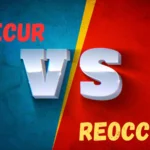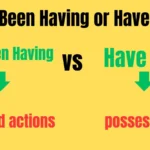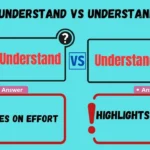Comparative adjectives play a crucial role in the English language.
They help us describe differences between two items, people, or concepts, making our communication clearer and more precise.
In this comprehensive guide, we will explore the rules for forming comparative adjectives, provide numerous examples, and offer exercises to help you master their use.
Understanding Comparative Adjectives in English
Comparative adjectives are used to compare differences between the two objects they modify (larger, smaller, faster, higher).
They are typically formed in two ways: by adding “-er” to the end of an adjective or by using the word “more” before the adjective.
Understanding how to use comparative adjectives correctly will enhance your ability to describe and differentiate effectively.
What Are Comparative Adjectives?
Comparative adjectives are adjectives that compare two things, highlighting differences or changes in degree. For example, in the sentence “John is taller than Mark,” “taller” is a comparative adjective comparing John’s height to Mark’s height.
Importance in the English Language
Comparative adjectives are essential for clear and precise communication.
They allow us to express comparisons in size, quality, quantity, and degree, which is fundamental in both written and spoken English.
Examples of Basic Comparisons
- Size: My house is bigger than yours.
- Quality: This book is more interesting than the other one.
- Quantity: She has fewer apples than he does.
- Degree: The weather today is warmer than yesterday.
Forming Comparative Adjectives: The Essential Rules
Forming comparative adjectives correctly is crucial for effective communication. Let’s delve into the essential rules that govern their formation.
General Rules for Forming Comparatives
- For one-syllable adjectives, add “-er”:
- Tall → Taller
- Fast → Faster
- For adjectives ending in “-e,” add “-r”:
- Large → Larger
- Nice → Nicer
- For two-syllable adjectives ending in “-y,” change “y” to “i” and add “-er”:
- Happy → Happier
- Busy → Busier
- For adjectives with two or more syllables, use “more” before the adjective:
- Beautiful → More beautiful
- Interesting → More interesting
Importance of Correct Formation
Using the correct form of comparative adjectives ensures your sentences are clear and grammatically correct. Incorrect usage can lead to confusion and misunderstandings.
Examples and Non-Examples
- Correct: She is smarter than her brother.
- Incorrect: She is more smarter than her brother.
- Correct: This puzzle is more challenging than the last one.
- Incorrect: This puzzle is challenginger than the last one.
The “-er” Suffix for Short Adjectives
For one-syllable adjectives and some two-syllable adjectives ending in “-y,” the “-er” suffix is added to form the comparative.
Rules for One-Syllable Adjectives
Adding “-er” to one-syllable adjectives is straightforward. Here are some examples:
- Cold → Colder
- Short → Shorter
- Tall → Taller
Special Cases (e.g., adjectives ending in “y”)
When adjectives end in “-y,” the “y” is replaced with “i” before adding “-er”:
- Happy → Happier
- Lazy → Lazier
Examples with Illustrations
| Adjective | Comparative | Example |
| Bright | Brighter | The sun is brighter today than yesterday. |
| Young | Younger | She is younger than her sister. |
Using “more” with Longer Adjectives
For adjectives with two or more syllables, “more” is used to form the comparative.
Guidelines for Multi-Syllable Adjectives
When dealing with longer adjectives, using “more” is the preferred method. Here are some examples:
- More beautiful
- More expensive
- More comfortable
Cases Where “more” is Preferred
Using “more” avoids awkward-sounding words and maintains clarity. For instance, “beautifuler” is incorrect, whereas “more beautiful” is clear and grammatically correct.
Comparative Structures with Examples
| Adjective | Comparative | Example |
| Comfortable | More comfortable | This chair is more comfortable than the old one. |
| Interesting | More interesting | The book is more interesting than the movie. |
Irregular Comparative Adjectives You Need to Know
Some adjectives have irregular comparative forms. These do not follow the standard rules and must be memorized.
List of Common Irregular Comparatives
| Adjective | Comparative | Example |
| Good | Better | This pizza is better than the last one. |
| Bad | Worse | His condition is worse than yesterday. |
| Far | Further | She lives further away than I do. |
Usage and Exceptions
Irregular comparatives often appear in common usage and have exceptions. For instance, “far” can be “farther” or “further” depending on the context.
Contextual Examples for Clarity
- Good → Better: This method is better than the previous one.
- Bad → Worse: The situation is getting worse.
Comparative Adjectives in Action: Real-Life Examples
Seeing comparative adjectives in real-life contexts helps reinforce their usage.
Comparative Adjectives in Everyday Speech
- Shopping: This dress is cheaper than that one.
- Travel: The new route is shorter than the old one.
Examples from Literature and Media
- Literature: “It was the best of times, it was the worst of times.” – Charles Dickens
- Media: “This smartphone is faster than the previous model.”
Comparative Adjectives in Academic Writing
- Research: The new theory is more comprehensive than the old one.
- Reports: The recent data is more accurate than last year’s.
Common Mistakes to Avoid with Comparative Adjectives
Avoiding common mistakes ensures your use of comparative adjectives is accurate and effective.
Incorrect Use of “more” and “-er” Together
Using “more” and “-er” together is incorrect and redundant.
- Incorrect: She is more smarter than her brother.
- Correct: She is smarter than her brother.
Misuse of Irregular Comparative Adjectives
Irregular comparatives can be tricky. Ensure you use the correct form.
- Incorrect: This solution is gooder than that one.
- Correct: This solution is better than that one.
Forgetting to Use a Comparative Adjective When Comparing Two Items
When comparing two items, always use a comparative adjective.
- Incorrect: She is fast than him.
- Correct: She is faster than him.
Using Too Few Adjectives to Make Comparisons
Using a limited number of adjectives can make descriptions vague. Enhance your comparisons with varied adjectives.
- Incorrect: The car is fast.
- Correct: The car is faster than the bike.
Advanced Comparatives: Beyond the Basics
Beyond basic comparatives, there are more complex structures to consider.
Compound Comparatives
Compound comparatives involve multiple words to express a comparison.
- Example: This model is far more superior than the last one.
Double Comparatives
Double comparatives use two comparatives in a sentence for emphasis.
- Example: The situation is getting worse and worse.
Explanation and Common Pitfalls
While compound and double comparatives add emphasis, they should be used sparingly to avoid redundancy.
Comparative Adjectives in Different Contexts
Comparative adjectives are used across various contexts, enhancing clarity and description.
Comparatives in Business Communication
- Emails: This proposal is more detailed than the previous one.
- Reports: Our sales figures are higher this quarter.
Comparatives in Scientific Writing
- Research Papers: The new compound is more effective than the old one.
- Studies: The results are more significant than anticipated.
Comparatives in Creative Writing
- Novels: Her eyes were brighter than the stars.
- Poetry: His words were softer than a whisper.
Practice Makes Perfect: Exercises to Master Comparative Adjectives
Exercises are vital for mastering comparative adjectives. Here are some practical activities.
Matching Adjectives with the Correct Comparative Form
Exercise: Match the adjectives with their correct comparative forms.
| Adjective | Comparative |
| Bright | ______________ |
| Short | ______________ |
| Happy | ______________ |
Answer Key:
- Bright → Brighter
- Short → Shorter
- Happy → Happier
Transforming Sentences Using Comparative Adjectives
Exercise: Transform the following sentences using the correct comparative adjective.
- This book is interesting. (more)
- He is tall. (taller)
- The weather is good. (better)
Answers:
- This book is more interesting.
- He is taller.
- The weather is better.
Creating Your Own Comparative Sentences
Exercise: Write your own sentences using the following adjectives in their comparative form.
- Beautiful
- Expensive
- Comfortable
Fun with Comparatives: Games and Activities
Learning comparatives can be fun! Here are some interactive activities.
Interactive Quizzes and Puzzles
- Online Quizzes: Websites like Quizlet offer comparative adjective quizzes.
- Crossword Puzzles: Create crosswords with comparative adjectives.
Classroom Activities for Learners
- Group Activities: Compare items in the classroom and discuss.
- Role-Playing: Use comparative adjectives in role-playing scenarios.
Online Resources and Tools
- Grammarly: Helps check the correct use of comparatives.
- Merriam-Webster: Provides definitions and examples.
Conclusion
Mastering comparative adjectives is essential for clear and effective communication.
By understanding the rules, practicing regularly, and avoiding common mistakes, you can enhance your descriptive language skills.
Keep practicing and exploring comparative adjectives in various contexts to become more proficient.
Additional Resources
For further reading and practice, consider the following resources:
- Books: “English Grammar in Use” by Raymond Murphy.
- Articles: Grammarly Blog
- Apps: Duolingo for language practice.
References
- Merriam-Webster Dictionary
- Grammarly Handbook
- Cambridge English Grammar in Use
By adhering to these guidelines, you will gain a deep understanding of comparative adjectives and improve your English language proficiency. Happy learning!

Amelia Harris, a passionate educator, simplifies English grammar and vocabulary for learners of all levels. With her engaging style, mastering English has never been easie




